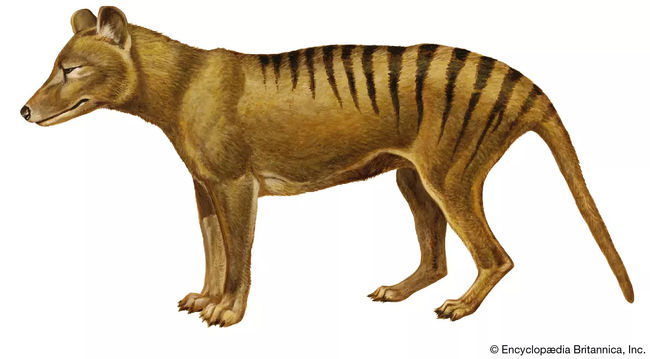Recently, the news came out that scientist are trying to revive the extinct creature thylacine. There have been some attempts to revive extinct creatures like mammoths, but they’ve all failed. People are giving attention to the Thylacine Project, wondering if it is going to be successful this time. For the Thylacine Project, scientists at Melbourne University are collaborating with Colossal. Their goal is to succeed in the project within 10 years.

The thylacine was a type of thylacinidae of carnivorous marsupial. Marsupials are mammals that are born immature and grow up in their mother’s pouch. Kangaroos and Koalas are representative of marsupials. The thylacine was a very unique animal that had a pouch like a kangaroo, a face like a wolf, and stripes like a tiger. A long time ago, thylacines inhabited the entire region of Australia. However, they were eventually limited to Tasmania Island due to interaction with humans and Dingos. In the 1900s, most of them were hunted because they kill animals such as sheep, or because people wanted to get their fur. Of course, they were also hunted just for fun. Thylacine became extinct when the final one died in a zoo, in 1936. A few people insist that thylacine would have gone extinct anyway since they were isolated on an island, and that background made thylacines lack genetic diversity. Nonetheless, it is clear that excessive hunting was the most direct cause for their extinction.
Many people are excited and hoping that our current ecosystem can be recovered by reviving extinct creatures, starting with the thylacine. Their logic is that biodiversity can be brought back to the level where it used to by reviving extinct creatures. On the contrary, there are people who are concerned that reviving extinct creatures have negative effects on nature. Those who oppose the Thylacine Project are worrying about the unknown effect of revived animals on the ecosystem. If revived animals are released, other animals may be affected. Moreover, thylacine was an apex predator, so it will disturb the food chain of the current ecosystem.
The slogan of the Thylacine Project is “turning science fiction into scientific fact.” Like this slogan and the netizen’s reaction saying “Maybe we can revive dinosaurs!” it is an interesting dream of recovering nature by reviving extinct creatures. Still, some say that trying to revive animals that became extinct for some reason is excessive meddling with the natural balance. We should prioritize protecting existing creatures, not reviving extinct creatures. Humans’ arrogant choices will make ourselves suffer. However, more important than us, nature and the Earth will suffer. How can we take responsibility if we ruin the environment in this way? We have to seriously consider how our choices impact the environment.
76th Reporter • CHOI BO YOUN • invierno.y@kyonggi.ac.kr
- TAG
-
 What Happened in KGU? : 수원캠퍼스 학생총회 편
On April 4th, a general meeting of students was held in the Tele-convention center at the Suwon campus. The contents were the same as the general meeting of students in the Seoul campus: the first part was for agenda announcement, the second part was about the Membership Training for whole university, and the third part was simple Q&A time. In the first part, the agendas were all the same as the ones for the Seoul campus, and the result of the ...
What Happened in KGU? : 수원캠퍼스 학생총회 편
On April 4th, a general meeting of students was held in the Tele-convention center at the Suwon campus. The contents were the same as the general meeting of students in the Seoul campus: the first part was for agenda announcement, the second part was about the Membership Training for whole university, and the third part was simple Q&A time. In the first part, the agendas were all the same as the ones for the Seoul campus, and the result of the ...

 [타 대학보 축사] 늘 그랬듯, 묵묵히
[타 대학보 축사] 늘 그랬듯, 묵묵히
 [와이파이] 큰 박스에 달랑 물건 하나, 과대포장 규제 정책 시행은 언제쯤
[와이파이] 큰 박스에 달랑 물건 하나, 과대포장 규제 정책 시행은 언제쯤
 [문화산책] 이 세계는 멋져 보이지만 모두 환상이야
[문화산책] 이 세계는 멋져 보이지만 모두 환상이야
 [네컷만화] 학생총회
[네컷만화] 학생총회

 목록
목록



















